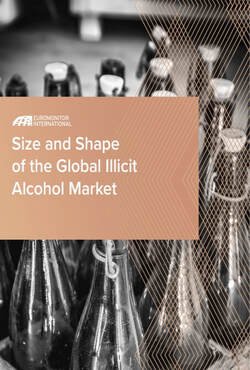By Euromonitor International
Alcoholic beverages are deeply ingrained in most societies worldwide, with global consumption in 2017 generating US$1.6 trillion in legally registered sales of 222.8 million hectolitres of pure alcohol (“hectolitres of alcohol equivalent”, or hl lae). However, despite the efforts of policy-makers, law enforcement officials, and legitimate alcohol manufacturers, illicit alcoholic beverages still account for a significant share of the total volume of alcohol consumed in many countries. This white paper explores critical issues affecting the problem of illicit alcohol in today’s global alcohol industry. To this end, the paper analyses research conducted in 24 countries in Latin America, Africa, and Eastern Europe, and examines the major factors shaping their illicit alcohol markets. Illicit alcohol is prevalent in these countries: Of the 42.3 million hl lae of total alcohol consumed each year, approximately 25.8% is illicit. In other words, nearly 10.9 million hl lae of illicit alcohol is consumed annually in these 24 countries alone. This suggests they represent an effective sample for exploring this important topic. Illicit alcoholic beverages are defined as those not complying with the regulations and taxes in the countries where they are consumed, resulting in serious health risks to consumers, revenue loss, and brand degradation for legitimate manufacturers, as well as reduced tax revenue for governments. These products are responsible for hundreds of cases of death and illness due to accidental methanol intoxication, millions of dollars used to fund other criminal activities, and the fiscal loss of billions of dollars in unpaid taxes. Health risks affect the poorest and most vulnerable consumers by contributing to widening health inequalities. The most significant risks and costs for each country depend on the characteristics of the local market for illicit alcohol. The landscape of illicit alcohol is varied and complex, ranging from homemade artisanal beverages sold without the proper sanitary permits to legitimately branded bottles of alcohol smuggled illegally into a country. However, although market characteristics differ across countries, the problem of illicit alcohol exists in every region, in developed and developing countries, urban and rural areas, and higher-income and lower-income neighbourhoods alike.




